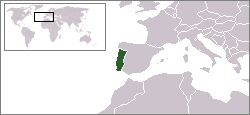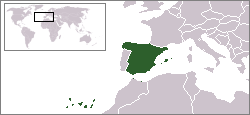|
Parmacella Valenciennii
''Parmacella valenciennii'' is a species of air-breathing land slug, a terrestrial pulmonate gastropod mollusk in the family Parmacellidae. Distribution The distribution of ''Parmacella valenciennii'' includes: * Southern Portugal (south of Lisboa), It is very abundant in Alentejo. * Spain * Isolated area(s) in southern France Description The animal is brownish red to brownish olive, with black bands on the mantle. Adult specimens are lighter. The body is sharply keeled in the posterior section. The mantle length in young animals is about 3/4 of the body length. The mantle is rounded in the anterior part and pointed in posterior part. The animal is up to 100 mm long, usually 70–80 mm long and 20 mm in width. The shell is yellow, triangular, fragile and flat, with 1.5 whorls. The length of the shell is 15 mm, 9 mm in width and 2–3 mm high. ''Parmacella valenciennii'' differs anatomically from all other ''Parmacella'' species by a single ... [...More Info...] [...Related Items...] OR: [Wikipedia] [Google] [Baidu] |
Philip Barker Webb
Philip Barker Webb (10 July 1793 – 31 August 1854) was an English botanist. Life Webb was born to a wealthy, aristocratic family; his father was the lord of the manors of Witley and Milford, Surrey, Milford, in Surrey, England. Webb was educated at Harrow School and Christ Church, Oxford. He collected plants in Italy, Spain, and Portugal, and was the first person to collect in the Tetuan Mountains of Morocco. En route to Brazil he made what was intended to be a brief visit to the Canary Islands, but he stayed for a considerable time, returning after his Brazil expedition. The results can be seen in the nine-volume ''Natural History of the Canary Islands, Histoire Naturelle des Iles Canaries'' (''Natural History of the Canary Islands''), which he co-authored with Sabin Berthelot. In company with Berthelot, who had lived on the islands for some time, Webb collected specimens on the islands between 1828 and 1830. The text of ''Histoire Naturelle des Iles Canaries'' took 20&nb ... [...More Info...] [...Related Items...] OR: [Wikipedia] [Google] [Baidu] |
List Of Non-marine Molluscs Of Portugal
The non-marine molluscs of Portugal are a part of the molluscan fauna of Portugal. There are numerous species of non-marine molluscs living in the wild in Portugal. Freshwater gastropods Neritidae * '' Theodoxus baeticus'' (Lamarck, 1822) Bithyniidae * ''Bithynia tentaculata'' (Linnaeus, 1758) Hydrobiidae * ''Alzoniella rolani'' (Boeters, 1986) * '' Belgrandia alcoaensis'' C. Boettger, 1963 - endemic to PortugalG.A. Holyoak, D.T. Holyoak & R. Mendes (2017). "Descriptions of two new species of ''Belgrandia'' (Gastropoda:Hydrobiidae) from Central Portugal". Iberus 35(1): 71-83. * '' Belgrandia alvaroi'' G. Holyoak, D. Holyoak & Mendes, 2017 - endemic to Portugal * '' Belgrandia heussi'' C. Boettger, 1963 - endemic to Portugal * '' Belgrandia jordaoi'' G. Holyoak, D. Holyoak & Mendes, 2017 - endemic to Portugal * '' Belgrandia lusitanica'' (Paladilhe, 1867) - endemic to Portugal * '' Belgrandia silviae'' Rolán & Oliveira, 2009 - endemic to Portugal * ''Hydrobia glyca'' ( ... [...More Info...] [...Related Items...] OR: [Wikipedia] [Google] [Baidu] |
Whorl (mollusc)
A whorl is a single, complete 360° revolution or turn in the spiral growth of a mollusc shell. A spiral configuration of the shell is found in numerous gastropods, but it is also found in shelled cephalopods including ''Nautilus'', ''Spirula'' and the large extinct subclass of cephalopods known as the ammonites. A spiral shell can be visualized as consisting of a long conical tube, the growth of which is coiled into an overall helical or planispiral shape, for reasons of both strength and compactness. The number of whorls which exist in an adult shell of a particular species depends on mathematical factors in the geometric growth, as described in D'Arcy Wentworth Thompson's classic 1917 book ''On Growth and Form'', and by David Raup. The main factor is how rapidly the conical tube expands (or flares-out) over time. When the rate of expansion is low, such that each subsequent whorl is not that much wider than the previous one, then the adult shell has numerous whorls. When the ... [...More Info...] [...Related Items...] OR: [Wikipedia] [Google] [Baidu] |
Gastropod Shell
The gastropod shell is part of the body of a Gastropoda, gastropod or snail, a kind of mollusc. The shell is an exoskeleton, which protects from predators, mechanical damage, and dehydration, but also serves for muscle attachment and calcium storage. Some gastropods appear shell-less (slugs) but may have a remnant within the mantle, or in some cases the shell is reduced such that the body cannot be retracted within it (semi-slug). Some snails also possess an operculum that seals the opening of the shell, known as the Aperture (mollusc), aperture, which provides further protection. The study of mollusc shells is known as conchology. The biological study of gastropods, and other molluscs in general, is malacology. Shell morphology terms vary by species group. Shell layers The gastropod shell has three major layers secreted by the Mantle (mollusc), mantle. The calcareous central layer, tracum, is typically made of calcium carbonate precipitated into an organic matrix known as c ... [...More Info...] [...Related Items...] OR: [Wikipedia] [Google] [Baidu] |
Mantle (mollusc)
The mantle (also known by the Latin word pallium meaning mantle, robe or cloak, adjective pallial) is a significant part of the anatomy of molluscs: it is the dorsal body wall which covers the visceral mass and usually protrudes in the form of flaps well beyond the visceral mass itself. In many species of molluscs the epidermis of the mantle secretes calcium carbonate and conchiolin, and creates a shell. In sea slugs there is a progressive loss of the shell and the mantle becomes the dorsal surface of the animal. The words mantle and pallium both originally meant cloak or cape, see mantle (vesture). This anatomical structure in molluscs often resembles a cloak because in many groups the edges of the mantle, usually referred to as the ''mantle margin'', extend far beyond the main part of the body, forming flaps, double-layered structures which have been adapted for many different uses, including for example, the siphon. Mantle cavity The ''mantle cavity'' is a central fea ... [...More Info...] [...Related Items...] OR: [Wikipedia] [Google] [Baidu] |
List Of Non-marine Molluscs Of France
The non-marine molluscs of France are a part of the molluscan fauna of Metropolitan France (including Corsica). There are 695 species of non-marine molluscs living in the wild in continental France. Freshwater gastropods Hydrobiidae * '' Arganiella exilis'' * '' Belgrandia varica'' (J. Paget, 1854) - It was endemic to France, but it is extinct.Fontaine B., Bouchet P., Van Achterberg K., Alonso-Zarazaga M. A., Araujo R. et al. (2007). "The European union’s 2010 target: Putting rare species in focus." ''Biological Conservation'' 139: 167-185. Table 2 on the page 173. PDF * ''Belgrandiella pyrenaica'' * '' Bythiospeum articense'' * '' Bythiospeum bourguignati'' * '' Bythiospeum bressanum'' * ''Bythiospeum garnieri'' * ''Fissuria boui'' * ''Litthabitella elliptica'' * ''Palacanthilhiopsis vervierii'' Lithoglyphidae * ''Lithoglyphus naticoides'' Moitessieriidae * ''Moitessieria corsica'' * ''Moitessieria juvenisanguis'' * ''Moitessieria lineolata'' * '' Moitessieria locard ... [...More Info...] [...Related Items...] OR: [Wikipedia] [Google] [Baidu] |
List Of Non-marine Molluscs Of Spain
The non-marine molluscs of Spain are a part of the molluscan fauna of Spain. Non-marine molluscs of the Canary Islands are listed separately. There are more than 300 species of non-marine molluscs living in the wild in Spain. Freshwater gastropods Neritidae * ''Theodoxus fluviatilis'' (Linnaeus, 1758) Ampullariidae * ''Pomacea insularum'' (d'Orbigni, 1835) - Invasive species Viviparidae * ''Cipangopaludina chinensis'' (J. E. Gray, 1833) - Invasive species * ''Sinotaia quadrata'' (Benson, 1842) - Invasive species Melanopsidae * '' Melanopsis tricarinata dufouri'' * '' Melanopsis penchinati'' Bourguignat, 1868 * ''Melanopsis praemorsa'' (Linnaeus, 1758) Thiaridae * ''Melanoides tuberculata'' (O. F. Müller, 1774) - Invasive species Amnicolidae * '' Bythinella andorrensis andorrensis'' (Paladilhe, 1874) * '' Bythinella batalleri'' Bofill, 1925 - endemic to Spain **''Bythinella batalleri batalleri'' Bofill, 1925 - endemic to Spain **''Bythinella batalleri cuenca'' Boete ... [...More Info...] [...Related Items...] OR: [Wikipedia] [Google] [Baidu] |
Alentejo
Alentejo ( , ) is a geographical, historical, and cultural region of south–central and southern Portugal. In Portuguese, its name means "beyond () the Tagus river" (''Tejo''). Alentejo includes the regions of Alto Alentejo and Baixo Alentejo. It corresponds to the districts of Beja, Évora, Portalegre, and Alentejo Litoral. Its main cities are Évora, Beja, Sines, Serpa, Estremoz, Elvas, and Portalegre. It has borders with Beira Baixa in the north, with Spain (Andalucia and Extremadura) in the east, Algarve in the south, and the Atlantic Ocean, Ribatejo, and Estremadura in the west. Alentejo is a region known for its traditional polyphonic singing groups, similar to those found in Tuscany, Corsica, and elsewhere. History The comarca of the Alentejo became the Alentejo Province, divided into upper (Alto Alentejo Province) and lower (Baixo Alentejo Province) designations. The modern NUTS statistical region, Alentejo Region, was expropriated from the medieval provi ... [...More Info...] [...Related Items...] OR: [Wikipedia] [Google] [Baidu] |
Parmacellidae
Parmacellidae is a family of air-breathing land slugs, terrestrial pulmonate gastropod mollusks within the superfamily Parmacelloidea (according to the taxonomy of the Gastropoda by Bouchet & Rocroi, 2005). This family has no subfamilies (according to the taxonomy of the Gastropoda by Bouchet & Rocroi, 2005). Slugs in this family make and use love darts made of chitin. Distribution The distribution of the family Parmacellidae includes the western Palearctic, and ranges from the Canary Islands and Europe to Afghanistan. ** subgenus '' Levanderiella'' Schileyko, 2007Schileyko A. A. (2007). "''Levanderiella'', a new name for ''Levanderia'' Likharev et Wiktor, 1980 (Pulmonata, Parmacellidae)". ''Ruthenica'' 17(1-2): 84PDF * '' Cryptella'' Webb & Berthelot, 1833Parmacellidae |
Mollusk
Mollusca is the second-largest phylum of invertebrate animals after the Arthropoda, the members of which are known as molluscs or mollusks (). Around 85,000 extant species of molluscs are recognized. The number of fossil species is estimated between 60,000 and 100,000 additional species. The proportion of undescribed species is very high. Many taxa remain poorly studied. Molluscs are the largest marine phylum, comprising about 23% of all the named marine organisms. Numerous molluscs also live in freshwater and terrestrial habitats. They are highly diverse, not just in size and anatomical structure, but also in behaviour and habitat. The phylum is typically divided into 7 or 8 taxonomic classes, of which two are entirely extinct. Cephalopod molluscs, such as squid, cuttlefish, and octopuses, are among the most neurologically advanced of all invertebrates—and either the giant squid or the colossal squid is the largest known invertebrate species. The gas ... [...More Info...] [...Related Items...] OR: [Wikipedia] [Google] [Baidu] |
Gastropod
The gastropods (), commonly known as snails and slugs, belong to a large taxonomic class of invertebrates within the phylum Mollusca called Gastropoda (). This class comprises snails and slugs from saltwater, from freshwater, and from land. There are many thousands of species of sea snails and slugs, as well as freshwater snails, freshwater limpets, and land snails and slugs. The class Gastropoda contains a vast total of named species, second only to the insects in overall number. The fossil history of this class goes back to the Late Cambrian. , 721 families of gastropods are known, of which 245 are extinct and appear only in the fossil record, while 476 are currently extant with or without a fossil record. Gastropoda (previously known as univalves and sometimes spelled "Gasteropoda") are a major part of the phylum Mollusca, and are the most highly diversified class in the phylum, with 65,000 to 80,000 living snail and slug species. The anatomy, behavior, feeding, and re ... [...More Info...] [...Related Items...] OR: [Wikipedia] [Google] [Baidu] |









